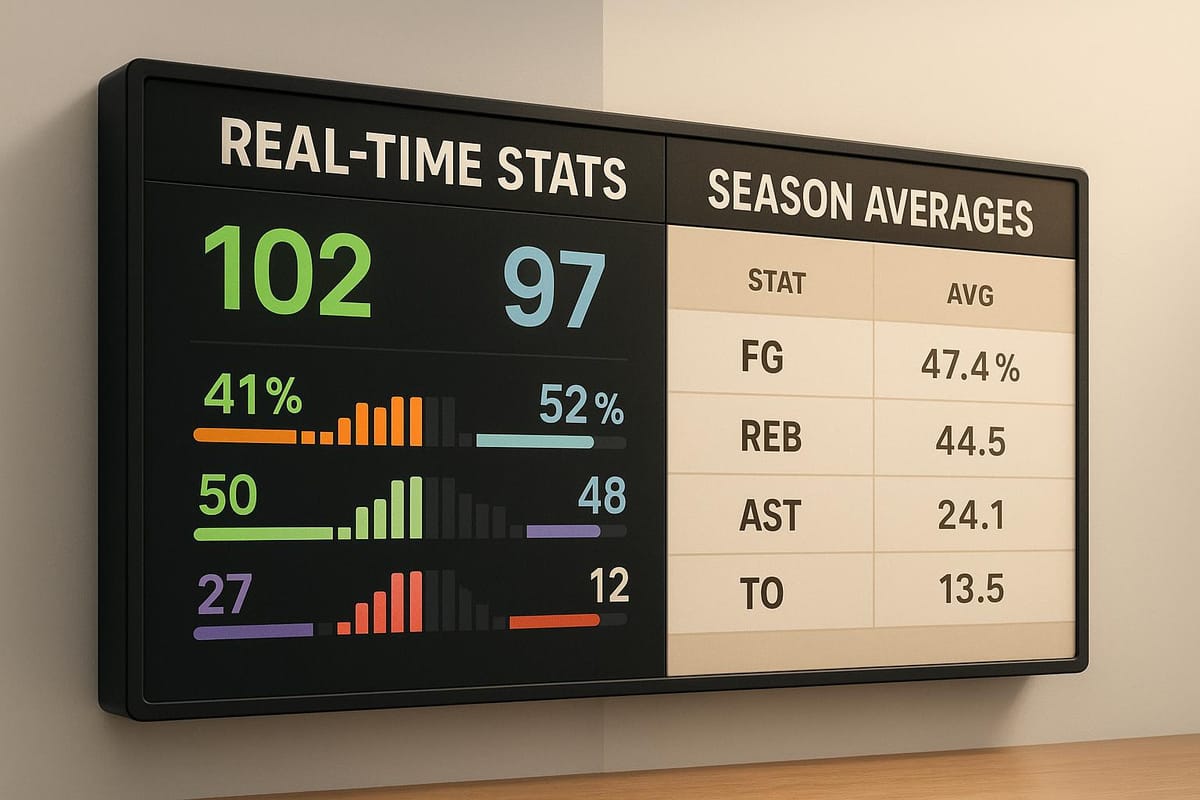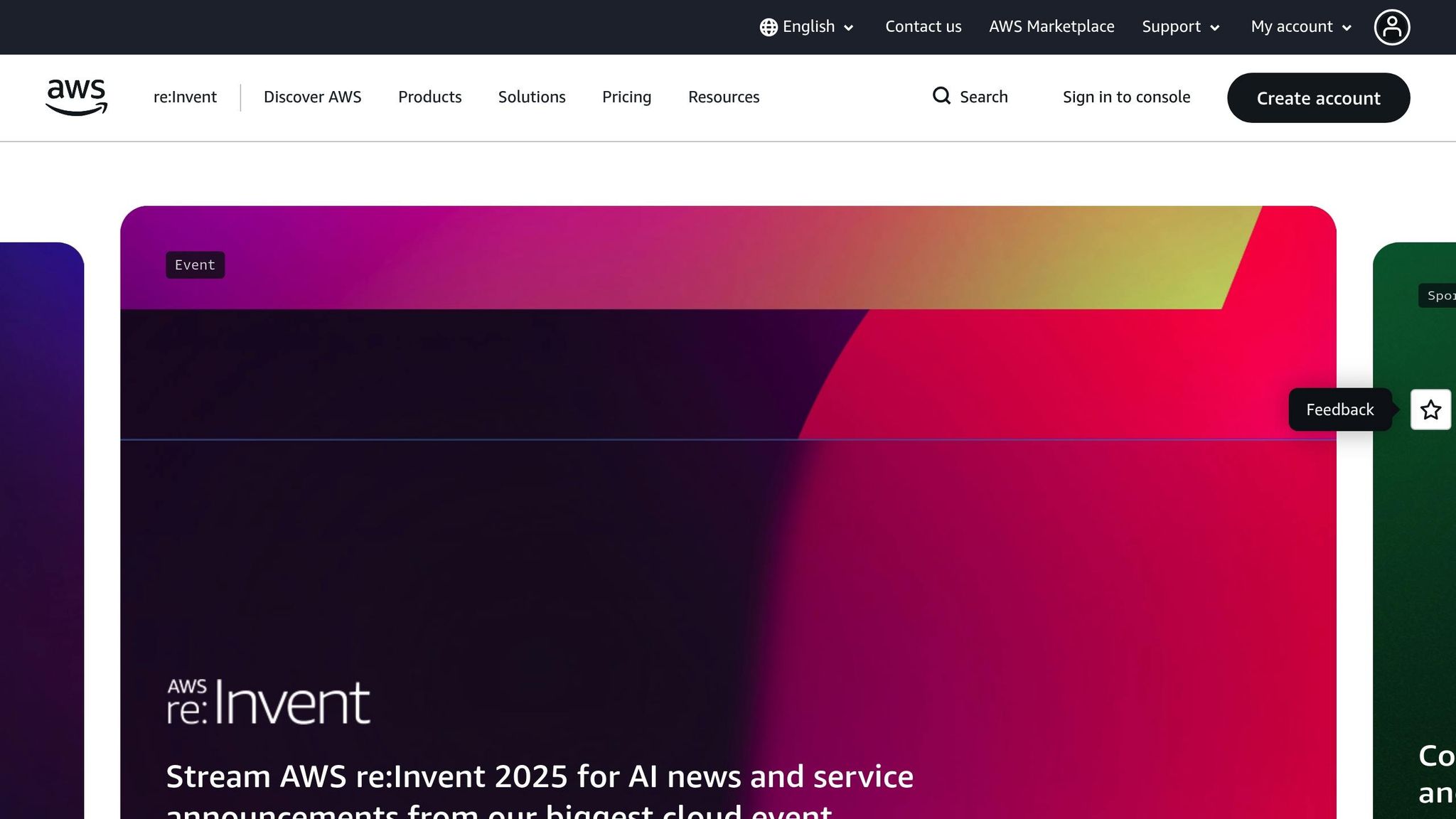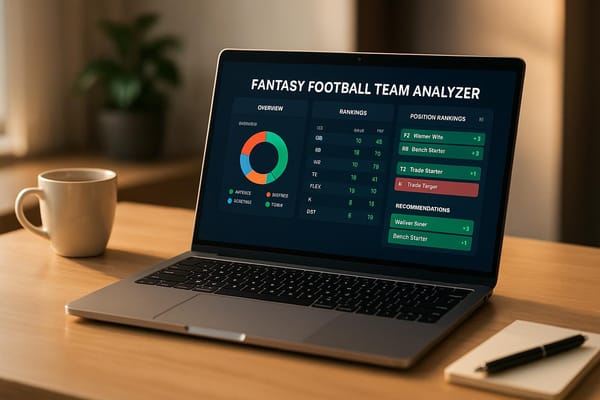Real-Time Stats vs Season Averages: Which Matter More?
Explore the crucial roles of real-time stats and season averages in sports analytics for smarter game and long-term strategies.

In sports analytics, real-time stats and season averages serve different purposes but are equally important. Real-time stats provide immediate insights during games, helping coaches and players make quick decisions, like adjusting strategies or monitoring player fatigue. Season averages, on the other hand, offer a steady view of long-term performance, vital for planning trades, contracts, and strategies.
Here’s the key takeaway: Real-time stats are best for in-game decisions, while season averages are crucial for long-term planning. Combining both provides a balanced approach, ensuring smarter decisions both on and off the field.
Quick Overview:
- Real-Time Stats: Focus on current performance. Useful for game tactics, player rotations, and spotting momentum shifts.
- Season Averages: Reflect consistent performance over time. Ideal for evaluating reliability, planning rosters, and shaping strategies.
- Best Approach: Use real-time stats for immediate adjustments and season averages for strategic decisions. Together, they provide a clearer picture of player and team performance.
Platforms like StatPro simplify this process by presenting both data types side by side, offering tools for both live game analysis and long-term evaluations.
Game-Changing Data: The Evolution of Sports Analytics | Amazon Web Services

What Real-Time Stats and Season Averages Mean
Grasping the distinction between real-time stats and season averages is key to making smart decisions in sports analytics. Each type of data serves a different purpose, offering insights into both immediate performance and long-term trends.
Real-Time Stats Explained
Real-time stats are updated continuously as the game unfolds. These metrics offer instant feedback on how players and teams are performing, as well as the overall flow of the game.
In the NBA, real-time stats might include shooting percentages, plus-minus ratings, and turnovers. For the NFL, they track completion rates and third-down conversions, while MLB focuses on pitch-by-pitch performance and velocity trends. These stats are captured using advanced tracking systems: NBA arenas rely on SportVU cameras, NFL stadiums use RFID chips, and MLB parks employ Statcast technology.
Coaches use real-time data to make quick decisions, like calling timeouts when shooting percentages dip or adjusting defensive strategies based on current offensive efficiency. While real-time stats are great for immediate adjustments, they don’t provide the broader perspective that season averages offer.
Season Averages Explained
Season averages, on the other hand, reflect performance over a longer period, typically covering months of gameplay. These metrics smooth out the highs and lows of individual games, revealing consistent patterns and skill levels.
Season averages are calculated by dividing cumulative stats by the number of games or opportunities. For example, an NBA player averaging 24.5 points per game has scored that amount on average across all games played. Similarly, an NFL running back with 4.2 yards per carry has averaged that distance over all rushing attempts.
These averages are critical for long-term evaluations. Front offices rely on them when negotiating contracts, planning drafts, or making trade decisions. For instance, a three-year average provides better insight into a player’s future performance than data from just the last few games.
Season averages also help distinguish between consistent skill and short-term variance. A pitcher with a 3.20 ERA over 200 innings is likely more reliable than someone with the same ERA over just 20 innings. A larger sample size reduces the influence of luck or isolated events that can skew short-term stats.
How StatPro Delivers Both Analytics Types

StatPro combines both real-time and season-long analytics to give users a complete picture. This dual approach ensures you can track live game developments while keeping an eye on long-term performance trends.
With StatPro’s Pro plan, available for $9.99/month, users receive live updates on player stats and team rankings. Features like real-time shooting percentages and defensive efficiency keep you informed as games progress. At the same time, season averages are displayed alongside real-time data, offering instant context. For example, when viewing a player’s current game stats, you can immediately see how they compare to their season averages - helping to spot when a player is performing above or below their usual level.
For organizations with more advanced needs, StatPro’s Enterprise plan provides custom pricing and access to APIs and detailed reporting. This option allows professional teams and media outlets to integrate both real-time and historical data into their workflows, ensuring they have the full picture when making decisions.
StatPro’s platform is tailored to the unique demands of different sports. Whether it’s football’s weekly schedule, basketball’s frequent games, or baseball’s daily matchups, StatPro adapts its data presentation to meet the specific needs of each sport. With comprehensive coverage of the NFL, NBA, and MLB, the platform ensures decision-makers are equipped with the tools they need to analyze both the now and the big picture.
When to Use Real-Time Stats vs Season Averages
Knowing when to lean on real-time stats versus season averages can make all the difference in decision-making. Each serves its purpose, and the key is understanding which metric fits the situation.
Real-Time Stats for Game Decisions
Real-time stats are a game-changer - literally. Coaches rely on this data to make quick, informed decisions during games. For example, NBA coaches monitor shooting percentages to decide when to call a timeout or adjust their defensive strategy. Similarly, NFL coaches track completion rates to evaluate a quarterback's performance and tweak their game plan as needed. Real-time plus-minus ratings also help coaches analyze player lineups, identifying the best moments for substitutions to maximize team performance.
This data isn't just about tactics - it’s also about player health. By tracking movement and performance metrics in real time, teams can spot signs of fatigue or potential injury. This allows them to intervene before a minor issue becomes a major problem. While real-time stats are perfect for these dynamic, in-the-moment decisions, season averages provide a broader perspective for off-the-court planning.
Season Averages for Planning and Strategy
Season averages are the go-to metrics for long-term planning and strategy. They offer a steady, reliable view of a player’s overall performance, making them essential for decisions that have lasting consequences.
Teams use season averages during contract negotiations, free-agent evaluations, and draft preparations. These metrics highlight consistent performance, helping evaluators compare players effectively. For instance, scouts preparing for the draft prioritize athletes who show sustained excellence over an entire season, as this indicates reliability and potential for growth.
In player development, coaches analyze season-long trends - like strikeout rates in baseball or shooting accuracy in basketball - to create tailored improvement plans. Season averages also play a big role in shaping strategies for future seasons. Teams review efficiency metrics from previous years to decide whether to stick with their current approach or overhaul their game plan.
The Pro plan combines the best of both worlds, offering real-time updates alongside comprehensive season averages. This dual approach equips coaches and analysts to make smarter decisions, whether they're focused on winning the next game or building a stronger team for the future.
Pros and Cons of Each Approach
Understanding the strengths and weaknesses of real-time stats and season averages is key to choosing the right tool for any situation.
Why Real-Time Stats Work
Real-time stats provide a snapshot of what’s happening in the moment, allowing for split-second decision-making. For example, if a coach notices a sudden drop in shooting efficiency, they can adjust the game plan on the fly.
These stats are also incredibly useful for monitoring player health. By analyzing live data on movement patterns and fatigue, medical staff can intervene early to address potential issues, possibly preventing injuries before they occur.
Another advantage is situational analysis. If a pitcher’s velocity drops noticeably during a game, it can signal fatigue or declining performance, prompting a manager to make a timely substitution.
But real-time stats aren’t without their downsides. They can be highly variable and don’t always represent a player’s overall ability. Early-game data, for instance, might not account for adjustments made later in the game, leading to decisions that might overlook the bigger picture.
Why Season Averages Work
Season averages, on the other hand, offer a broader perspective. By smoothing out daily fluctuations, these metrics highlight consistent performance trends and give a more accurate picture of a player’s long-term capabilities. For instance, stats like batting averages in baseball or completion percentages in football are often used to evaluate players because they’re reliable indicators of future performance.
These averages are especially important for long-term planning. General managers depend on aggregated stats like on-base percentages or earned run averages to make informed decisions about trades, signings, and roster construction.
Season averages can also reveal gradual trends that might not be apparent in real-time data, making them invaluable for strategic planning. However, their biggest drawback is their lack of immediacy. They don’t reflect recent developments, such as injuries or sudden changes in form, which can affect short-term performance.
Side-by-Side Comparison
| Factor | Real-Time Stats | Season Averages |
|---|---|---|
| Immediacy | Provides instant feedback for quick decisions | Offers historical context; slower to update |
| Reliability | Can be volatile and context-dependent | More stable and consistent over time |
| Game Management | Ideal for in-the-moment adjustments | Less effective during live action |
| Long-term Planning | May not predict future performance reliably | Excellent for roster and strategic decisions |
| Injury Prevention | Flags potential issues immediately | Tracks gradual wear and tear |
| Player Evaluation | Captures current form and momentum | Highlights consistent performance trends |
| Error Impact | Mistakes can often be corrected quickly | Errors may have season-long consequences |
The best teams know how to use both approaches effectively. With StatPro’s Pro plan, you get real-time updates alongside detailed season analytics, giving you the tools to make smarter decisions at every stage of the game.
Best Times to Use Real-Time Stats
Real-time stats are game-changers, especially in fast-paced, dynamic situations where split-second decisions can make all the difference. Let’s dive into some key scenarios where these stats truly shine.
Top Situations for Real-Time Data
- Mid-game tactics: Real-time stats can pinpoint momentum shifts, helping coaches make quick adjustments to keep their team on track.
- Player rotation decisions: Live data ensures smarter, safer rotation choices, balancing performance needs with player well-being.
- Clutch moments: During critical game situations, instant insights guide decisions that could tip the scales in your favor.
- Exploiting matchups: Real-time stats uncover favorable opportunities, enabling swift tactical changes to outsmart the competition.
These examples highlight how real-time data can shape strategies and influence outcomes during high-stakes moments.
Real-Time Tools and Features
Platforms like StatPro provide live sports scores, stats, and updates tailored for leagues like the NFL, NBA, and MLB. With personalized feeds, teams can adapt their tactics on the fly. Leveraging tools like these allows coaches and players to respond immediately as situations evolve, turning raw data into actionable strategies that can change the course of a game.
Best Times to Use Season Averages
Real-time stats are great for making quick, in-game decisions, but when it comes to long-term planning, season averages take the spotlight. These metrics offer a broader view, helping teams, coaches, and analysts make decisions that stretch far beyond a single game.
When Season Data Matters Most
Season averages are essential for evaluating consistent performance and making well-informed, long-term decisions. They’re a cornerstone for contract talks, scouting efforts, and roster building. Why? Because they show the bigger picture. A player might have one amazing week, but their season average tells you if that performance is the norm or just a one-off.
When teams consider trades or draft picks, they lean on season averages to gauge a player’s reliability across different opponents, game conditions, and scenarios. For instance, a quarterback’s season-long completion rate is a far better indicator of their overall effectiveness than one standout game against a weaker team.
Season averages also play a key role in roster management and salary cap decisions. Instead of basing these critical choices on short-term flashes of brilliance, teams rely on the consistency reflected in a full season’s worth of data.
Even in fantasy sports and betting, season averages hold weight. While a recent game might highlight a temporary performance spike, season-long stats serve as a more dependable benchmark for predicting future outcomes.
StatPro's Season Analytics Tools
StatPro takes the power of season averages and turns it into actionable insights. Their advanced analytics and team ranking tools are designed to help you make smarter long-term evaluations. For just $9.99 per month with the Pro plan, you get access to detailed player stats that reveal performance trends across entire seasons. This makes it easier to spot consistent patterns that might not be obvious in one-off games.
The platform’s team rankings feature dives deep into season-long data, offering precise evaluations of team performance across multiple categories. Whether it’s offensive efficiency, defensive prowess, or special teams contributions, StatPro highlights the teams that consistently deliver.
On top of that, StatPro’s player performance insights give you context behind the numbers. Want to compare how a player performs at home versus away? Or see how they stack up against tougher opponents? Maybe you’re curious about their effectiveness during different parts of a game. StatPro breaks it all down, helping coaches and analysts not just see the stats, but understand the trends behind them.
For those who need even deeper insights, the Enterprise solution offers custom reports and API access. This option allows teams to integrate season data into their existing systems, track player growth over multiple seasons, and make informed decisions on everything from training plans to contract renewals.
Using Both Stats Together
In sports analytics, combining real-time stats with season averages creates a powerful toolkit for making smarter decisions. This approach balances the immediacy of current performance with the bigger picture provided by long-term data, offering insights that are both timely and context-rich.
Why Combining Both Metrics Makes Sense
Relying on just one type of data can leave you with blind spots. By integrating real-time stats and season averages, you can better determine whether a performance shift is temporary or part of a larger trend.
Take this example: if a player suddenly performs well above their season average, it might signal a short-term hot streak. On the other hand, a dip in recent stats compared to season-long numbers could hint at an underlying issue. By looking at both, you can make more informed decisions about strategies, player roles, or even tactical adjustments during a game.
How to Use Both Metrics Effectively
To get the most out of these insights, it's essential to know when to lean on each type of data. Real-time stats are invaluable for making quick, in-game decisions, while season averages provide a steady foundation for long-term planning. For instance:
- In-game decisions: Focus on real-time stats to adapt to immediate situations.
- Long-term strategies: Use season averages as a baseline, supplemented by recent trends for context.
Start by establishing a benchmark with season averages, then adjust based on current trends. If there’s a noticeable shift, it could signal the need to tweak tactics or reconsider player roles.
Context also plays a role. In high-pressure situations like playoffs, recent trends might carry more weight as teams adapt and evolve. During the regular season, however, season averages often offer a more reliable guide for strategy.
StatPro’s analytics platform simplifies this process by displaying both data types side by side. For just $9.99 per month with the Pro plan, users gain access to advanced tools that highlight shifts in performance - whether they’re fleeting or worth deeper analysis.
To put this method into action, layer season averages with real-time stats to create a well-rounded view. Start with the season averages to understand a player’s usual performance range, overlay current trends to capture their form right now, and then factor in situational elements like the opponent’s strength or game conditions. This approach ensures every decision is based on the clearest and most complete picture available.
Conclusion: Finding the Right Balance
When it comes to sports analytics, success lies in combining real-time stats with season averages, tailored to the specific context. Context is key - it shapes how data should be interpreted and applied. The smartest strategies rely on blending these metrics to paint a fuller picture of performance.
Each type of data brings something valuable to the table. Real-time stats offer immediate insights, perfect for on-the-fly game adjustments. On the other hand, season averages provide a steady foundation for long-term planning and strategy. Neither metric works in isolation. For instance, season averages might highlight a player's overall consistency, but real-time stats might expose struggles against certain opponents. Similarly, a recent hot streak could look impressive, but without the season-long context, it may not tell the whole story.
StatPro’s integrated analytics platform makes this balancing act easier by presenting both data types side by side. The best coaches, analysts, and teams understand that relying on complete information - not just fragments - leads to smarter decisions. Whether it’s during the regular season or the high-stakes playoffs, combining these insights ensures every decision is informed and strategic.
In playoff scenarios, recent performance trends often take center stage as teams adjust and evolve. Meanwhile, during the regular season, season averages typically serve as a more dependable guide for planning. The key to effective analysis is weighing short-term trends against long-term performance to make decisions that truly count.
FAQs
How can you combine real-time stats and season averages to improve sports analytics decisions?
Real-time stats and season averages each bring their own strengths to the table in sports analytics. Real-time stats deliver immediate feedback on a player's or team's current performance, helping coaches and analysts make split-second decisions - whether it's tweaking a strategy mid-game or managing a player's workload to prevent burnout.
Season averages, however, provide a broader perspective. They reveal patterns and trends over time, offering a reliable measure of consistency and overall performance. This makes them invaluable for long-term planning, player evaluations, and assessing team dynamics.
When these two types of metrics are combined, they create a powerful toolkit for decision-making. Real-time data can highlight how a player is performing in specific situations, while season averages ensure decisions are backed by consistency and reliability. Together, they can sharpen training programs, refine game strategies, and even help identify potential injury risks, leading to smarter, more effective outcomes.
How can real-time stats impact in-game decisions and player health management?
Real-time stats are a game-changer when it comes to making sharper in-game decisions and prioritizing player well-being. Coaches and analysts can dive into this data to fine-tune strategies - whether it’s tweaking player rotations, adjusting formations on the fly, or timing substitutions based on how players are performing in the moment.
When it comes to player health, these metrics are just as critical. They can track fatigue, monitor workload, and even flag early warning signs of potential injuries. By catching these issues early, teams can keep players performing at their best while reducing the risk of serious setbacks. Real-time data isn’t just about strategy - it’s a powerful tool for keeping players safe and ready to compete.
Why are season averages more dependable than real-time stats for long-term planning?
Season averages provide a reliable foundation for long-term planning because they even out the fluctuations seen in individual games, giving a more balanced perspective on a player's overall performance. On the other hand, real-time stats can be skewed by temporary factors like specific matchups, injuries, or even weather conditions.
Relying on season averages allows you to identify consistent trends and performance levels. This consistency is key when making decisions about player development, crafting game strategies, or making predictions with greater confidence.




